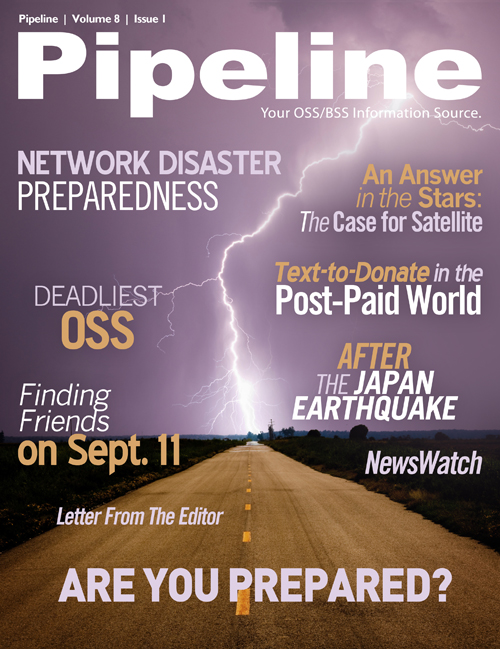Japanese Disaster
No discussion of disaster preparedness is complete without reviewing some of the data that came out of the Japanese Earthquake and resultant Tsunami. Several undersea cables were damaged, and the earthquake severely impacted wireless service provided by the three largest carriers, NTT Docomo, KDDI, and Softbank. The damage was widespread; for NTT Docomo, "facilities were damaged and commercial power supply was disrupted at exchange offices, among other things, impacting approximately 1.5 million circuits for fixed-line services, approximately 6,700 mobile base station equipment, approximately 15,000 circuits for corporate data communication services and others."
NTT had previously defined backup cable routes to maintain uninterrupted services, and as a result there was no impact on the carrier's overseas communication services. NTT engaged its Disaster Countermeasures Office following the earthquake, which employs over 10,000 staff. The carrier described their efforts: "Through such efforts as its provision of the Disaster Emergency Message Dial and the Disaster Message Board service, deployment of mobile base station vehicles (approximately 30 vehicles) and satellite mobile phones (approximately 870 handsets) and installation of special public telephones (approximately 2,300 telephones), NTT Group is making efforts to secure a means of communication for those who were affected by the earthquake."
Are We Prepared?
As we've seen here, Communication Service Providers are keenly aware of their crucial role in society, and have taken great steps to ensure they are prepared for disasters. And soon their respective preparedness plans might be more than corporate strategy—they may be legally regulated. A recent inquiry revealed the FCC is considering regulatory requirements for carriers, as part of the National Broadband Plan. And there are also many third-party emergency backup solutions on the market to fill in any gaps left by the carriers. (A recent survey by Forrester Consulting predicted 660% market growth in backup services.)
Despite all of this preparedness, there are natural and manmade forces that can and will disrupt communications networks. Until geo-redundant, high-bandwidth, non-terrestrial solutions are in play, downtime is inevitable. What is manageable is resiliency and response time, and it appears that for now, carriers are following the Boy Scout motto: Be Prepared.









